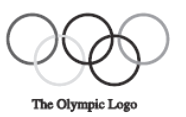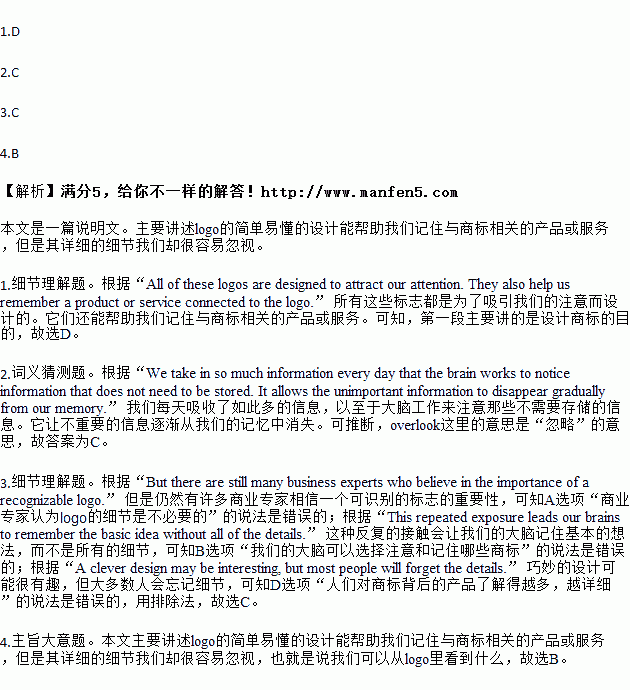题目内容

We see logos on signs, buildings, television, and even on the clothes we wear. Logos are used to stand for brands (品牌). There are logos such as the Nike "swoosh", the Apple logo and the colorful rings of the Olympic Games. All of these logos are designed to attract our attention. They also help us remember a product or service connected to the logo. However, research performed at the University of California, Los Angeles finds that remembering the details of logos is very difficult. The researchers try to explain this.
Logos are typically designed to be simple and easy to recognize. Yet the frequent exposure (频繁接触) to these logos can actually make our brains overlook the details of logos. It would be challenging to try to remember every single thing that crosses our path. We take in so much information every day that the brain works to notice information that does not need to be stored. It allows the unimportant information to disappear gradually from our memory.
The details of product logos are just the kind of information our brains tell us we do not need. This may be discouraging to logo designers and to companies that use these eye-catching logos. But there are still many business experts who believe in the importance of a recognizable logo.
Even though the brain is likely to pay no attention to unnecessary details, it is also programmed for recognition. When we see logos over and over again, we become familiar (熟悉) with them. This repeated exposure leads our brains to remember the basic idea without all of the details. This general sense of memory has its own benefits. It can make us feel like we really know the product behind the logo. In fact, familiarity with a logo can even make people feel more comfortable about buying or using certain products.
Logos are everywhere we look today. Those people who create logos need to know that people will only remember what they believe is important. A clever design may be interesting, but most people will forget the details.
1.In the first paragraph, the writer mainly ________.
A.introduces some famous brands B.describes the design of some logos
C.shows the popularity of famous brands D.explains the purpose of designing logos
2.The word "overlook" in Paragraph 2 probably means "________".
A.try to remember B.see the importance of C.take no notice of D.fail to understand
3.What can we learn from the passage?
A.Business experts think the details of logos are unnecessary.
B.Our brains can choose which logos to notice and remember.
C.The repeated exposure to a logo can lead people to buy the product.
D.People know more about the products behind logos with more details.
4.Which of the following would be the best title for the passage?
A.What Makes a Good Logo? B.What Can We See in a Logo?
C.Why Is a Good Logo Important? D.Why Should Logos Be Recognizable?

